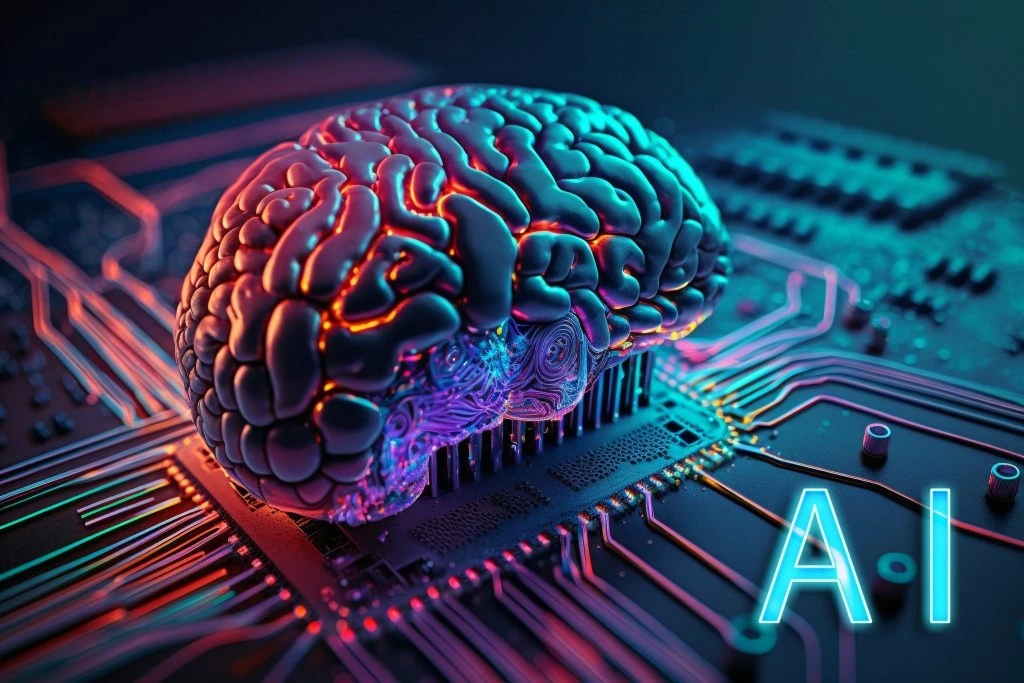Artificial Intelligence(AI)

An Artificial Intelligence (AI) course delves into the theory and applications of creating intelligent systems that mimic human-like cognitive functions. Students explore fundamental AI concepts such as machine learning, deep learning, natural language processing (NLP), and computer vision. The curriculum typically covers algorithms and models used in AI, including neural networks, decision trees, and reinforcement learning. Practical exercises involve implementing AI techniques using programming languages like Python and frameworks like TensorFlow or PyTorch. Students also learn about ethical considerations in AI, such as bias mitigation and data privacy. Advanced topics may include robotics, cognitive computing, and AI applications in fields like healthcare, finance, and autonomous vehicles. By the end of the course, participants gain a comprehensive understanding of AI technologies and are prepared to develop AI-powered solutions for diverse real-world challenges.
Duration - 6 Months
Overview of AI
Definition and History
Applications of AI in Various Industries
AI vs. Machine Learning vs. Deep Learning
Setting Up the Environment
Installing Python
Introduction to Jupyter Notebooks
Installing Required Libraries (NumPy, Pandas, Matplotlib, Scikit-learn, TensorFlow, Keras)
Basic Python Syntax
Variables and Data Types
Basic Operators
Conditional Statements
Loops
Python Data Structures
Lists
Tuples
Dictionaries
Sets
Functions and Modules
Defining and Calling Functions
Importing Modules
Using Built-in Functions and Libraries
Data Collection
Importing Data from CSV, Excel, and SQL Databases
Web Scraping Basics with BeautifulSoup and Scrapy
Using APIs for Data Collection (requests)
Data Wrangling
Handling Missing Values
Data Cleaning Techniques
Data Transformation and Normalization
Combining and Merging Datasets
Introduction to EDA
Importance of EDA
Steps in EDA
Descriptive Statistics
Measures of Central Tendency (Mean, Median, Mode)
Measures of Dispersion (Standard Deviation, Variance, Range)
Skewness and Kurtosis
Data Visualization
Introduction to Matplotlib and Seaborn
Creating Basic Plots (Line, Bar, Histogram, Box Plot)
Customizing Plots (Titles, Labels, Legends)
Introduction to Supervised Learning
Definition and Examples
Steps in Building Supervised Learning Models
Regression Algorithms
Linear Regression
Polynomial Regression
Support Vector Regression (SVR)
Classification Algorithms
Logistic Regression
k-Nearest Neighbors (k-NN)
Support Vector Machines (SVM)
Decision Trees and Random Forests
Model Evaluation
Train-Test Split
Cross-Validation
Performance Metrics (Accuracy, Precision, Recall, F1-Score)
Introduction to Unsupervised Learning
Definition and Examples
Steps in Building Unsupervised Learning Models
Clustering Algorithms
k-Means Clustering
Hierarchical Clustering
DBSCAN
Dimensionality Reduction
Principal Component Analysis (PCA)
t-Distributed Stochastic Neighbor Embedding (t-SNE)
Autoencoders
Introduction to Neural Networks
Biological Inspiration
Perceptron and Multilayer Perceptrons (MLP)
Activation Functions
Deep Learning Frameworks
Introduction to TensorFlow and Keras
Setting Up the Environment
Building Neural Networks
Creating and Training Neural Networks with Keras
Evaluating Neural Networks
Tuning Hyperparameters
Introduction to CNNs
Convolutional Layers
Pooling Layers
Fully Connected Layers
Building CNNs with Keras
Image Classification with CNNs
Data Augmentation Techniques
Transfer Learning with Pre-trained Models
s
Introduction to RNNs
Recurrent Layers and LSTMs
GRUs (Gated Recurrent Units)
Building RNNs with Keras
Sequence Prediction
Time Series Forecasting
Text Generation
Introduction to NLP
Text Preprocessing (Tokenization, Lemmatization, Stopwords Removal)
Bag of Words and TF-IDF
NLP with NLTK and SpaCy
Sentiment Analysis
Named Entity Recognition (NER)
Text Classification
Introduction to Reinforcement Learning
Key Concepts (Agent, Environment, Rewards)
Markov Decision Processes (MDP)
Deep Reinforcement Learning
Q-Learning
Deep Q-Networks (DQN)
Policy Gradients
AI for Image Recognition
Object Detection and Image Segmentation
Facial Recognition
AI for Text Processing
Chatbots and Virtual Assistants
Language Translation
AI for Time Series Analysis
Stock Market Prediction
Anomaly Detection
Ethics in AI
Bias and Fairness
Privacy Concerns
Transparency and Accountability
Best Practices
Model Deployment
Model Monitoring and Maintenance
Continuous Learning and Improvement
Practice Exercises for Each Module
Real-world Problem Solving
Analyzing Real-world Datasets
Interpreting Results and Drawing Conclusions
Building Small AI Applications
Implementing AI Models in Real-world Scenarios
Comprehensive Project Covering Multiple Modules
Real-world Problem Solving and Implementation
n
